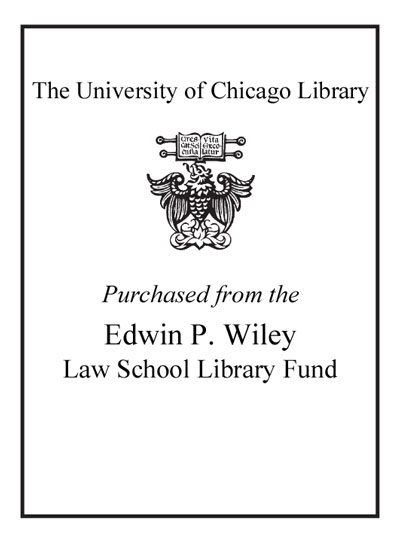Principled sentencing : readings on theory and policy /
Saved in:
| Edition: | 3rd ed. |
|---|---|
| Imprint: | Oxford ; Portland, Or. : Hart, 2009. |
| Description: | xi, 389 p. ; 25 cm. |
| Language: | English |
| Subject: | |
| Format: | Print Book |
| URL for this record: | http://pi.lib.uchicago.edu/1001/cat/bib/7489652 |
Table of Contents:
- Preface to the Third Edition
- Publisher's Note
- Chapter 1. Rehabilitation
- 1.1. The Decline of the Rehabilitative Ideal
- 1.2. Empirical Research Relevant to Sentencing Frameworks: Reform and Rehabilitation
- 1.3. Assessing the Research on 'What Works'
- 1.4. Reaffirming Rehabilitation
- 1.5. Should Penal Rehabilitationism Be Revived?
- Chapter 2. Deterrence
- 2.1. Studies of the Impact of New Harsh Sentencing Regimes
- 2.2. Punishment and Deterrence
- 2.3. Deterrent Sentencing as a Crime Prevention Strategy
- 2.4. Optimal Sanctions: Any Upper Limits?
- 2.5. Offenders' Thought Processes
- Chapter 3. Incapacitation
- 3.1. Incapacitation and "Vivid Danger"
- 3.2. Extending Sentences for Dangerousness: Reflections on the Bottoms-Brownsword Model
- 3.3. Incapacitation Within Limits
- 3.4. Predictive Sentencing and Selective Incapacitation
- Chapter 4. Desert
- 4.1. The Moral Worth of Retribution
- 4.2. Proportionate Sentences: a Desert Perspective
- 4.3. Punishment, Retribution and Communication
- 4.4. Limiting Retributivism
- 4.5. Seriousness, Severity and the Living Standard
- 4.6. The Recidivist Premium: For and Against
- Chapter 5. Restorative Justice
- 5.1. Conflicts as Property
- 5.2. Restoration and Retribution
- 5.3. Reparation and Retribution: Are They Reconcilable?
- 5.4. Normative Constraints: Principles of Penality
- 5.5. Restorative Justice: An Alternative to Punishment or an Alternative Form of Punishment?
- 5.6. Specifying Aims and Limits for Restorative Justice: A 'Making Amends' Model?
- 5.7. The Limits of Restorative Justice
- Chapter 6. Structuring Sentencing Discretion
- 6.1. Lawlessness in Sentencing
- 6.2. Techniques for Reducing Sentence Disparity
- 6.3. The Swedish Sentencing Law
- 6.4. Sentencing Policy Development under the Minnesota Sentencing Guidelines
- 6.5. Institutional Consistency: Appeal Court Judgements
- 6.6. Criticisms of Mandatory Minimums
- 6.7. Sentencing Information System (SIS) Experiments
- Chapter 7. Sentencing Young Offenders
- 7.1. United Nations Standard Minimum Rules for the Administration of Juvenile Justice ("The Beijing Rules")
- 7.2. United Nations Convention on the Rights of the Child
- 7.3. Rationales for Distinctive Penal Policies for Youth Offenders
- 7.4. Reduced Penalties for Juveniles: the Normative Dimension
- 7.5. The Transformation of the American Juvenile Court
- 7.6. Restraining the Use of Custody for Young Offenders: The Canadian Approach
- Chapter 8. Doing Justice to Difference: Diversity and Sentencing
- 8.1. Abandoning Sentence Discounts for Guilty Pleas
- 8.2. Individualizing Punishments
- 8.3. Hanging Judges and Wayward Mechanics: Reply to Michael Tonry
- 8.4. Justice and Difference
- Index

